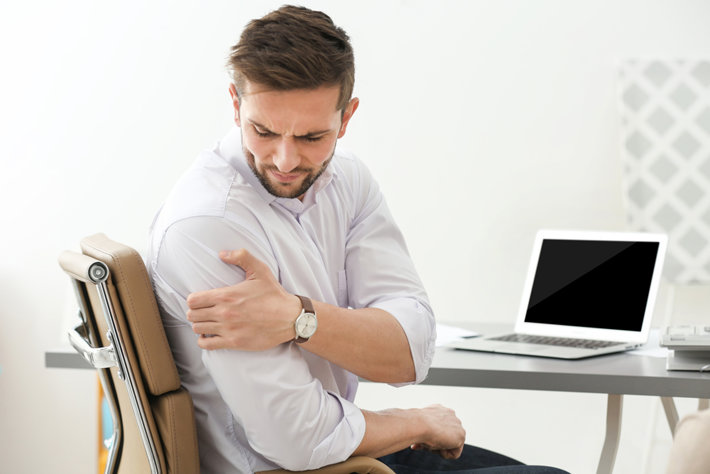Pain Is a Legitimate Concern, but Patients Need Better Solutions Than Addictive Opioids

According to the Centers for Disease Control and Prevention, about 20.5% to 21.8% of American adults (just over 50 million people) struggle with chronic pain. About 6.9% of adults (17 million people) struggle with high-impact chronic pain, which is so persistent it substantially restricts daily activities. These 50 million people need access to safe and effective pain treatment options that are not addictive and that do not put patients at risk for harmful side effects.
Researchers may be on the Verge of Creating a Non-Additive Pain Relief Alternative
Researchers and scientists are examining a new pill called VX-548 that is currently being examined for efficacy and compared to existing pain relief options. Thus far, the findings show the new drug easing post-surgery pain despite being a non-opioid and having zero potentially habit-forming characteristics.
But how does the drug reduce pain? VX-548 targets a very specific sodium channel that is only active in the body’s peripheral sensory nerve channel, i.e., a channel that transmits pain signals. The scientists who are developing VX-548 are hypothesizing that the drug may help ease pain without causing serious side effects.

The Science and Research Behind VX-548
The scientists behind VX-548 decided to test their drug in clinical trials and see how it stood up against opioid painkillers and placebo pills. The findings comparing VX-548 to placebos are documented in a paper titled “Selective Inhibition of Nav1.8 with VX-548 for Acute Pain,” published in The New England Journal of Medicine.
Among 577 patients undergoing bunion surgery or tummy tucks, those given VX-548 experienced more pain relief than those given placebo pills. While some noted side effects included headache and constipation, none were severe, and no one who received VX-548 reported craving it or experiencing any mind-altering effects.
Trials are being held to compare the pain-relieving effects of VX-548 with the pain-relieving effects of standard opioid painkillers. While it is anticipated that both drugs will provide pain relief, the researchers expect the VX-548 drug to produce that relief without the addictive side effects of opioid painkillers.
The research has not yet concluded, but experts indicate optimism about VX-548. “These findings are an important step forward in showing proof-of-principle,” said Dr. Stephen Waxman, a professor of neurology and neuroscience at Yale University School of Medicine. “Sodium channels are the molecular batteries that allow neurons [nerve cells] to communicate.” Dr. Waxman highlighted how blocking sodium channels to disrupt pain signaling is not new or different (Waxman pointed out that novocaine and lidocaine operate on similar scientific principles). However, Waxman did highlight that VX-548 may be the first drug to selectively block solely the sodium channels responsible for transmitting pain sensations throughout the body.
Preliminary Findings Show Promise for VX-548
Currently, a study is being done to compare the efficacy of VX-548 against a standard opioid (hydrocodone plus acetaminophen). Thus far, VX-548 is showing promise in its ability to counteract pain as effectively as hydrocodone plus acetaminophen, but without the potentially harmful side effects. Further, more patients have thus far cited VX-548 as being “effective” compared to hydrocodone plus acetaminophen (many patients said they stopped using hydrocodone plus acetaminophen because it “was not effective”).
Experts are urging additional study and research into VX-548, but thus far, they are optimistic. “There were some positive signals,” said Dr. Mark Wallace, commenting on the research. Dr. Wallace is a pain medicine specialist at the University of California, San Diego. Dr. Wallace described the research as “an early foray into an exciting new class of drugs in a difficult field.”
It does not take a stretch of the imagination to consider the benefit to millions of pain patients if scientists could develop a pain treatment method that was truly effective and that did not have harmful side effects. “I’m confident we will have a new class of nonaddictive pain medications,” said Waxman. “But it will take some time.”
Alternatives to Opioids are Available

In many ways, nature provides the medicine that some patients can use to treat their pain. There is no silver bullet to pain relief, and each patient will have to research their options, talk to their doctor, and see what works for them, but some natural pain relief methods include:
- Boswellia. The resin from Boswellia serrata trees is harvested and turned into tinctures, pills, or topical treatments. The natural medicine is used to treat arthritis, inflammation, and osteoarthritis.
- Turmeric. Turmeric contains curcumin, an antioxidant that helps protect the body from free radical molecules that can damage cells. Turmeric has also effectively treated inflammation, psoriasis, an upset stomach, ulcers, and indigestion.
- Cloves. Cloves are a natural pain relief medicine because of their high content of eugenol, a natural pain reliever. People take clove capsules, powders, and oils to treat headaches, arthritic inflammation, and toothaches.
- Acupuncture. An ancient Chinese practice, acupuncture may relieve pain by causing the body to release serotonin, the “feel good” chemical in the brain.
- Heat and Ice. Another household remedy for pain is to apply an ice pack to reduce swelling and inflammation in injured or painful areas of the body. Once inflammation has decreased, heat may be used to reduce stiffness.
The Need for Treatment for Those Who Become Hooked on Their Pain Relievers
The CDC estimates at least 280,000 Americans died from overdoses on prescription opioids between 1999 and 2021. The number of Americans who died from overdoses on prescription opioids in 2021 was nearly five times the number who died from such drugs in 1999. These drugs are addictive and can cause harm even when patients use them as intended.
Those addicted to opioid painkillers must receive help as soon as possible. If you know someone hooked on such drugs, please help them find and enter a qualified residential drug rehab center. Please do not wait until it is too late.
Sources:
- CDC. “Chronic Pain Among Adults—United States, 2019–2021.” Centers for Disease Control and Prevention, 2023. cdc.gov
- USNews. “Researchers Explore New Nonaddictive Means of Fighting Pain.” U.S. News, 2023. usnews.com
- NEJM. “Selective Inhibition of Nav1.8 with VX-548 for Acute Pain.” The New England Journal of Medicine, 2023. nejm.org
- Healthline. “5 Surprising Natural Pain Relievers.” Healthline, 2023. healthline.com
- CDC. “Opioid Overdose.” Centers for Disease Control and Prevention, 2023. cdc.gov


 ®
®